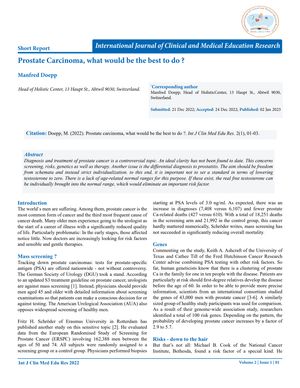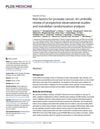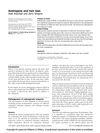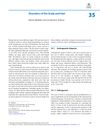Prostate Carcinoma: What Would Be the Best to Do?
January 2023
in “
International Journal of Clinical and Medical Education Research
”

TLDR Correct testosterone levels for age to treat prostate cancer, using low dose treatments as necessary.
The document discusses the complexities of diagnosing and treating prostate cancer, emphasizing the controversy surrounding screening and treatment methods. It highlights that mass screening for prostate cancer using prostate-specific antigen (PSA) tests is not supported by urological societies due to its failure to significantly reduce overall mortality, as shown in a study involving 162,388 men. Genetic studies have identified 100 risk genes for prostate cancer, with family history being a significant risk factor. An interesting finding from a study of 39,070 men suggests a link between early-onset male pattern baldness and an increased risk of aggressive prostate cancer. The document also critiques the use of anti-androgenic treatments, such as chemical castration, for low-malignant prostate tumors, citing a study of over 66,000 men that showed no significant survival benefit. It argues for individualized treatment based on age-related normal ranges of free testosterone, rather than a one-size-fits-all approach. The document concludes that both elevated and lowered concentrations of free testosterone should be corrected to normal levels for the respective age group, using low dose anti-androgens or prohormones as needed.




